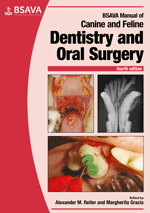
Full text loading...

Periodontal disease is the most common pathological condition occurring in adult dogs and cats. This chapter covers the diagnosis and management of periodontal disease, providing detailed instruction on the use of a range of equipment, instruments and materials. Operative Techniques: Professional dental cleaning and closed periodontal therapy; Open periodontal therapy; Gingivectomy and gingivoplasty.
Management of periodontal disease, Page 1 of 1
< Previous page | Next page > /docserver/preview/fulltext/10.22233/9781905319602/9781905319602.7-1.gif

Full text loading...















































































